24 Amazing Photographs Taken By the James Webb Telescope
Daniel Bonfiglio
Published
12/01/2023
in
ftw
The James Webb telescope is a modern marvel of technology and has produced some truly spectacular images of the cosmos in that time; recently highlighting the M51 galaxy.
- List View
- Player View
- Grid View
Advertisement
-
1.

-
2.

-
3.
 The James Webb telescope is over one year old, and has produced some truly spectacular images of the cosmos in that time; recently highlighting the M51 galaxy.
The James Webb telescope is over one year old, and has produced some truly spectacular images of the cosmos in that time; recently highlighting the M51 galaxy.
The spiritual successor to the iconic Hubble Telescope, James Webb does everything Hubble can do but better, especially in the infra-red range. Thanks to the James Webb Twitter account @NASAWebb, here are 24 astronomically cool new pics from the James Webb telescope. -
4.
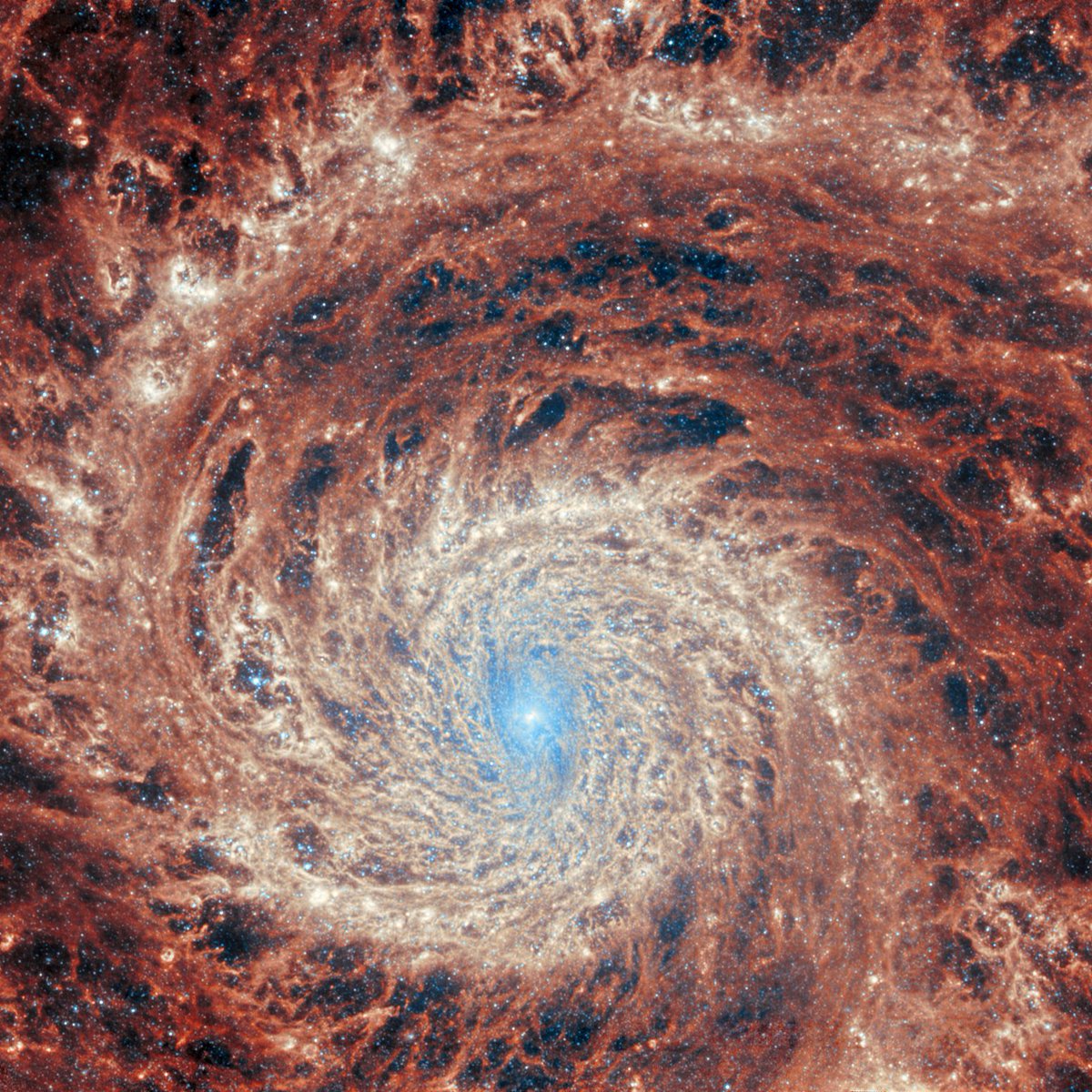 Ripple effect. Seen here by Webb's Mid-Infrared Instrument (MIRI) is the galaxy M51, also known as NGC 5194. The gravity of its neighbor, the dwarf galaxy NGC 5195, is thought to be partially responsible for those prominent & distinct spiral arms!
Ripple effect. Seen here by Webb's Mid-Infrared Instrument (MIRI) is the galaxy M51, also known as NGC 5194. The gravity of its neighbor, the dwarf galaxy NGC 5195, is thought to be partially responsible for those prominent & distinct spiral arms! -
5.
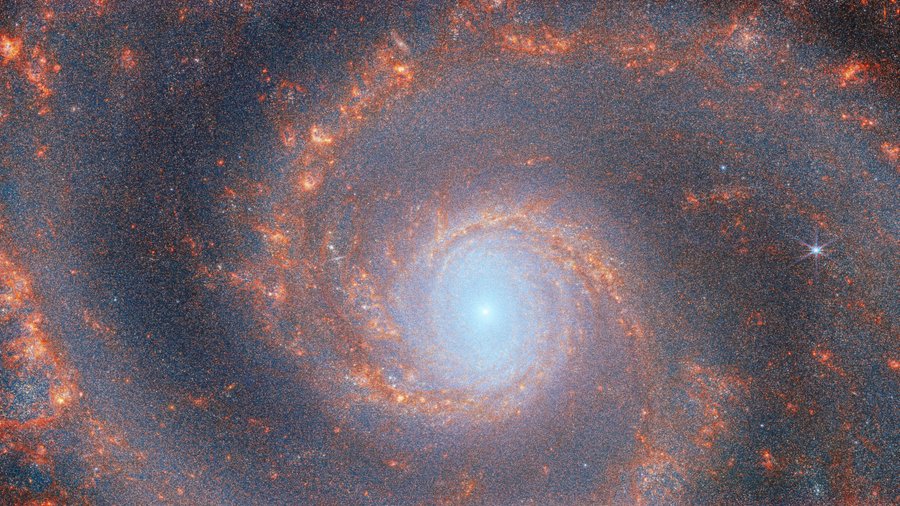 This view of M51 was taken by Webb's Near-Infrared Camera (NIRCam). While MIRI brings out the web-like structure of the dust in the galaxy, NIRCam focuses more on ionized gas from newly formed star clusters.
This view of M51 was taken by Webb's Near-Infrared Camera (NIRCam). While MIRI brings out the web-like structure of the dust in the galaxy, NIRCam focuses more on ionized gas from newly formed star clusters. -
6.
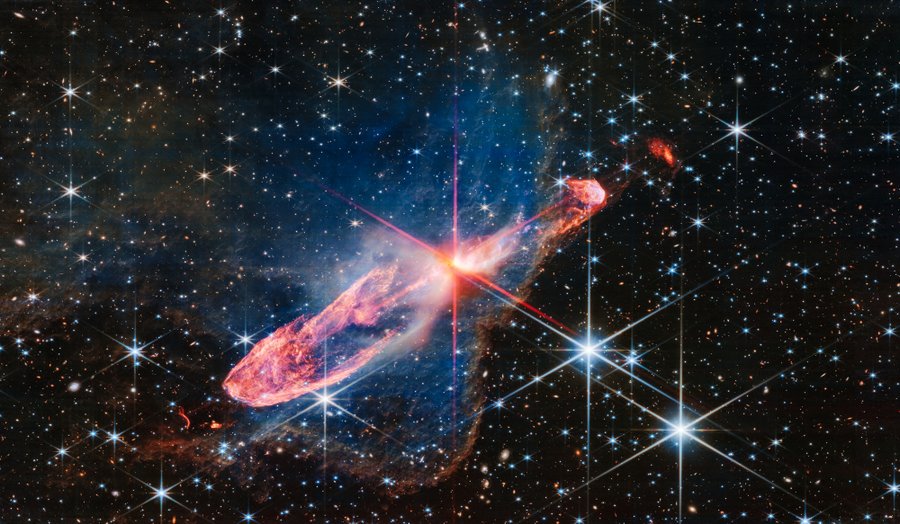 Going goblin mode. Within the orange-white splotch at the center of this image are 2 chaotic baby stars. Over thousands of years, the pair repeatedly gobbled up, then spat out the gas and dust around them — producing those fiery orange lobes.
Going goblin mode. Within the orange-white splotch at the center of this image are 2 chaotic baby stars. Over thousands of years, the pair repeatedly gobbled up, then spat out the gas and dust around them — producing those fiery orange lobes. -
7.
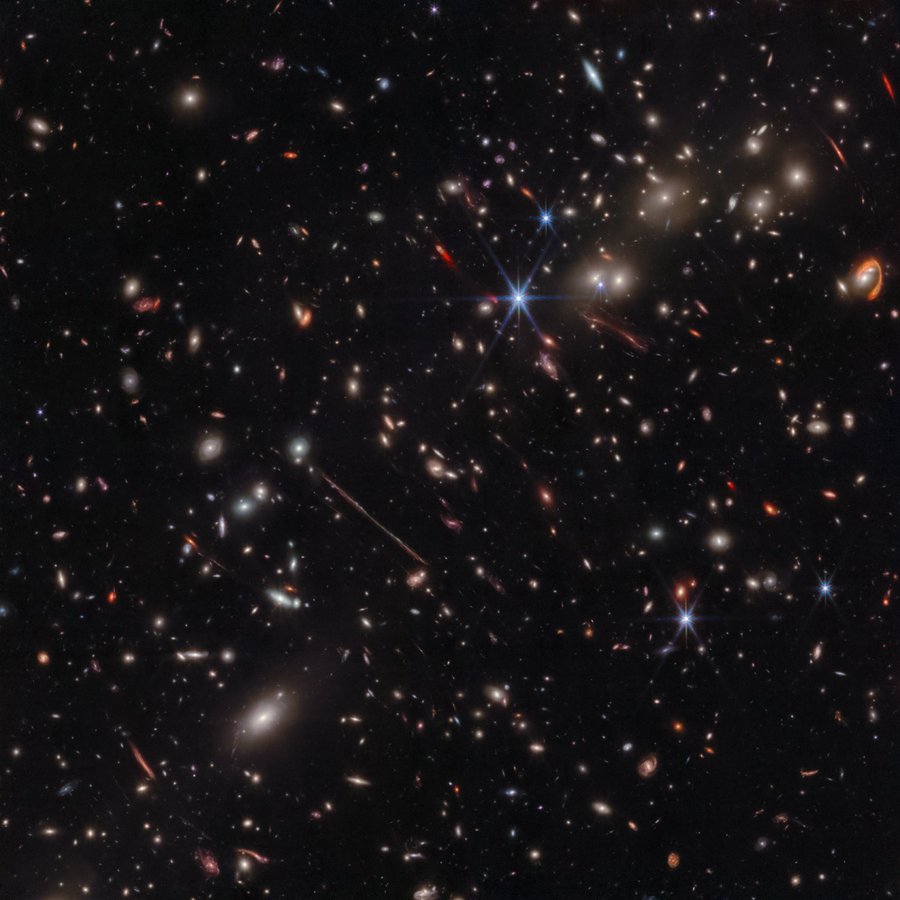 Webb observed galaxy cluster El Gordo, a cosmic teen that existed 6.2 billion years after the big bang. The most massive cluster of its era, it’s a perfect gravitational magnifying glass, bending & distorting light from distant objects behind it.
Webb observed galaxy cluster El Gordo, a cosmic teen that existed 6.2 billion years after the big bang. The most massive cluster of its era, it’s a perfect gravitational magnifying glass, bending & distorting light from distant objects behind it. -
8.
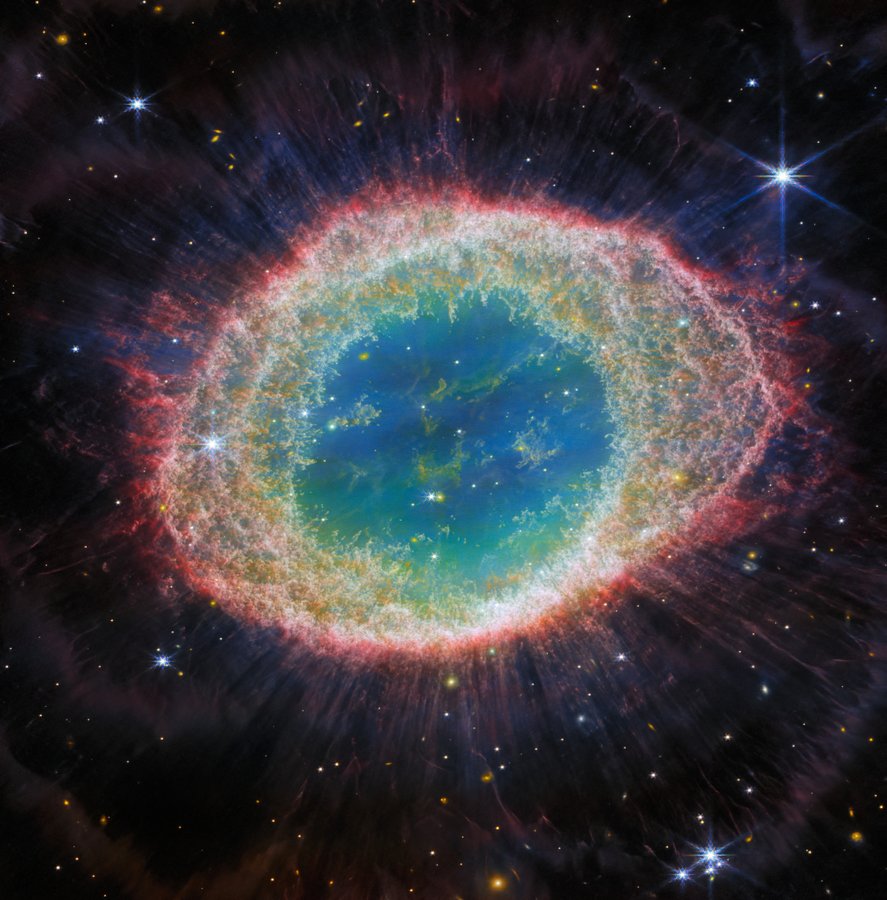 There’s just one Ring Nebula to rule them all. Now Webb has turned its eye on this popular target, revealing the complexity of its structure in unprecedented detail — and the possibility that the dying star at its center has a companion.
There’s just one Ring Nebula to rule them all. Now Webb has turned its eye on this popular target, revealing the complexity of its structure in unprecedented detail — and the possibility that the dying star at its center has a companion. -
9.
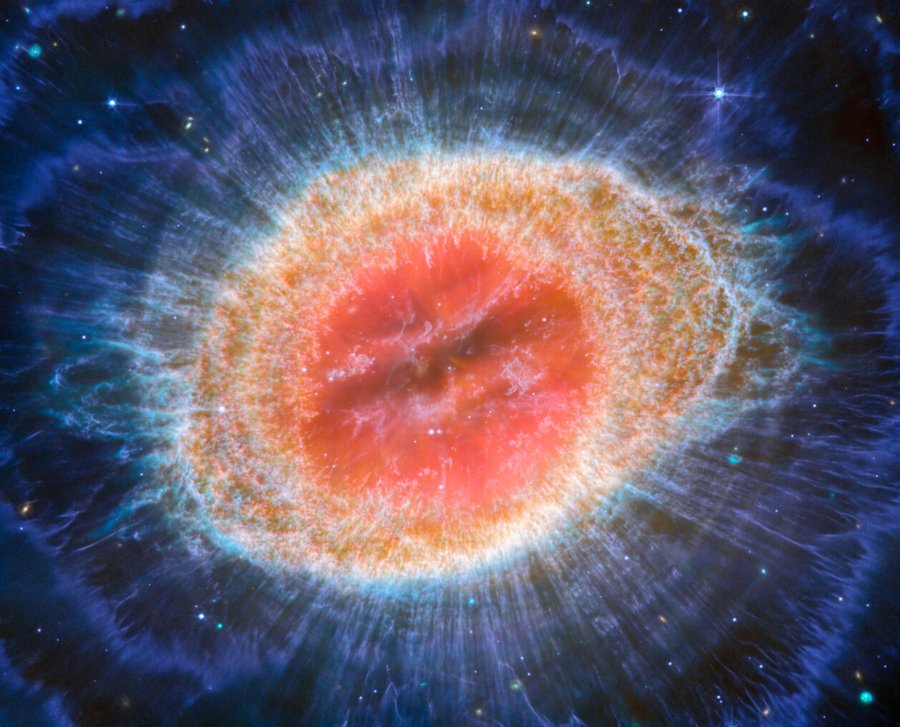 The mid-infrared instrument (MIRI) has given us the sharpest and clearest view of the faint halo outside the bright ring. Physical features within suggest there may be a companion star helping to sculpt the layers thrown off by the dying star.
The mid-infrared instrument (MIRI) has given us the sharpest and clearest view of the faint halo outside the bright ring. Physical features within suggest there may be a companion star helping to sculpt the layers thrown off by the dying star. -
10.
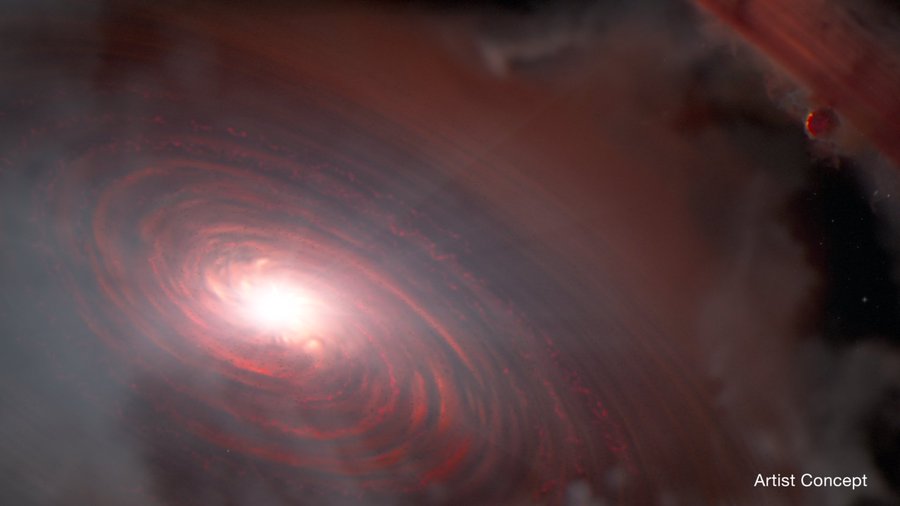 On our world, water is life. But how did it get here? Are there similar environments around other stars? Webb has us one step closer to answers. In a still-developing “solar system,” Webb detected water in the zone where rocky planets like Earth may form.
On our world, water is life. But how did it get here? Are there similar environments around other stars? Webb has us one step closer to answers. In a still-developing “solar system,” Webb detected water in the zone where rocky planets like Earth may form. -
11.
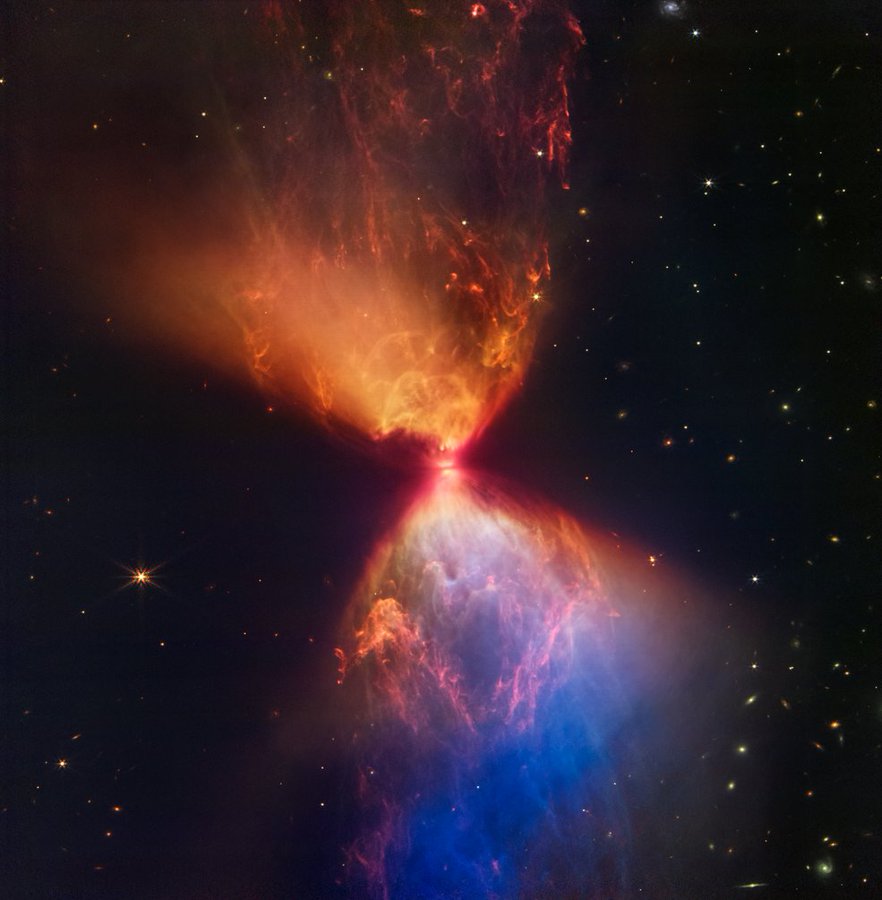
-
12.
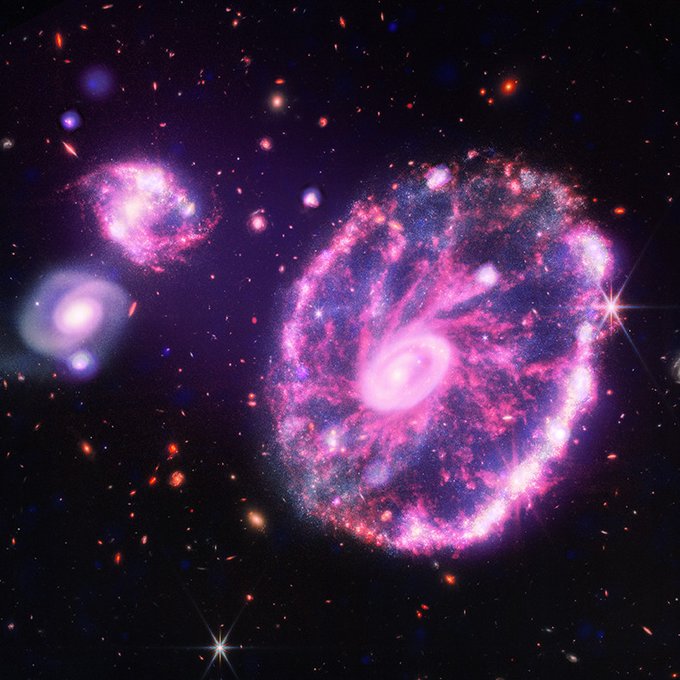 We know something about double features. The Barbie-pink image (left) features both infrared data from the Webb telescope and X-ray data from @chandraxray.
We know something about double features. The Barbie-pink image (left) features both infrared data from the Webb telescope and X-ray data from @chandraxray. -
13.
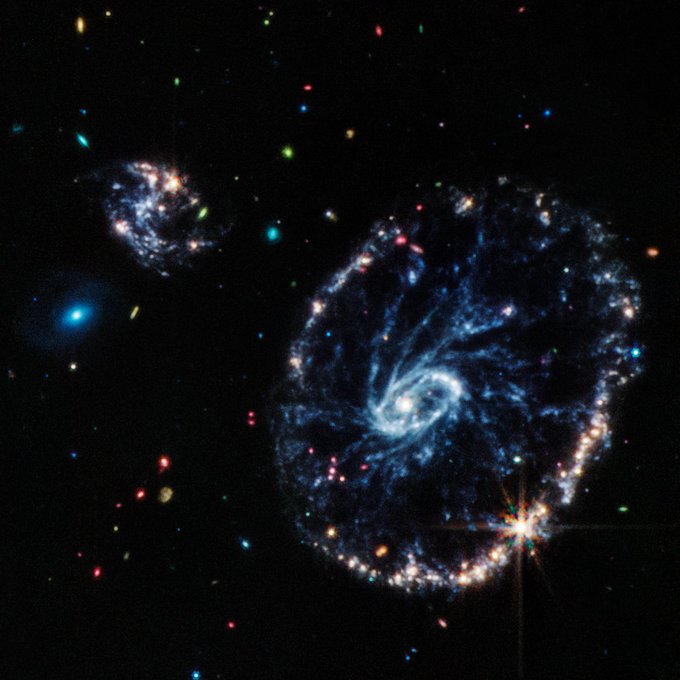 Meanwhile, the dark, intense image on the right is stripped down to data from just Webb's Mid-Infrared Instrument.
Meanwhile, the dark, intense image on the right is stripped down to data from just Webb's Mid-Infrared Instrument. -
14.
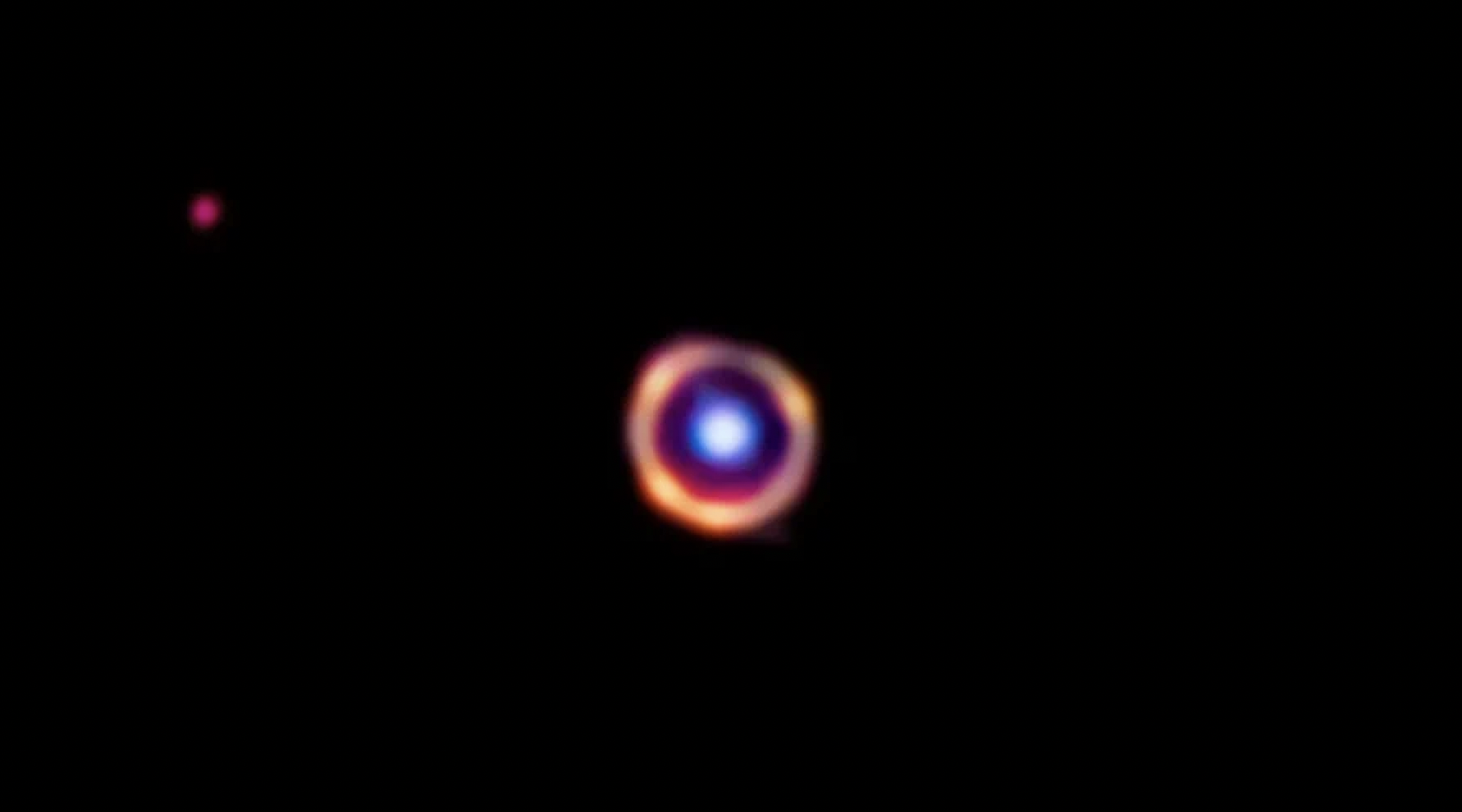 Webb found complex organic molecules similar to smoke or smog in a galaxy more than 12 billion light-years from Earth. This sets a new record for the most distant detection of these big, complicated molecules.
Webb found complex organic molecules similar to smoke or smog in a galaxy more than 12 billion light-years from Earth. This sets a new record for the most distant detection of these big, complicated molecules. -
15.
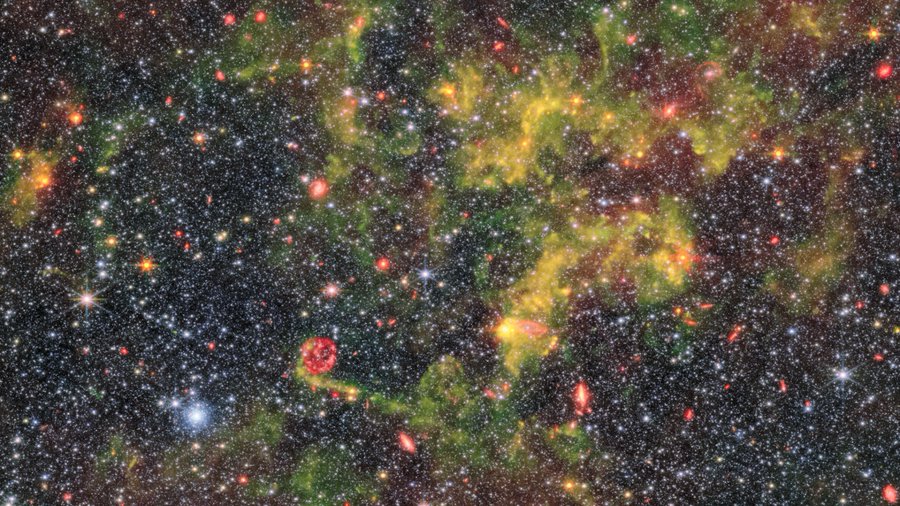 Space isn’t always metal. NGC 6822, a galactic neighbor captured by Webb, has unusually low metallicity, meaning it doesn’t have much in the way of elements heavier than hydrogen and helium. This image combines Webb’s views in near and mid-infrared light.
Space isn’t always metal. NGC 6822, a galactic neighbor captured by Webb, has unusually low metallicity, meaning it doesn’t have much in the way of elements heavier than hydrogen and helium. This image combines Webb’s views in near and mid-infrared light. -
16.
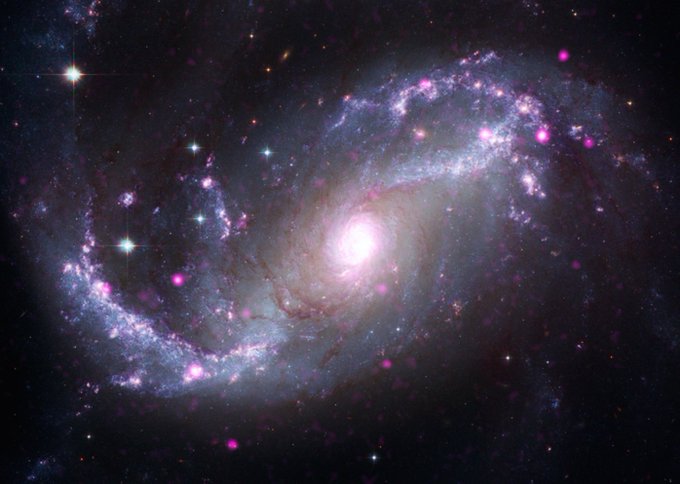 NGC 1672. Astronomers categorize this galaxy as a “barred” spiral.
NGC 1672. Astronomers categorize this galaxy as a “barred” spiral. -
17.
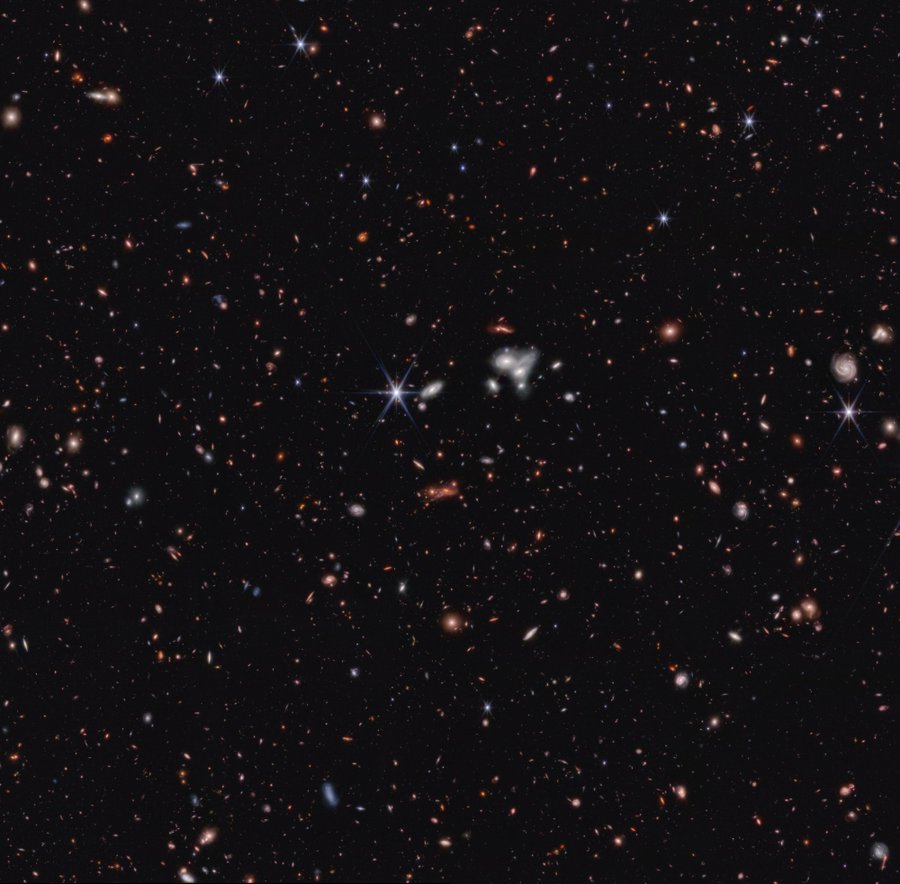 CEERS-iously? In a survey of 100,000 galaxies named CEERS, Webb found the most distant active supermassive black hole to date, 2 more small early black holes, and 11 early galaxies. All existed in the first 1.1 billion years after the big bang.
CEERS-iously? In a survey of 100,000 galaxies named CEERS, Webb found the most distant active supermassive black hole to date, 2 more small early black holes, and 11 early galaxies. All existed in the first 1.1 billion years after the big bang. -
18.
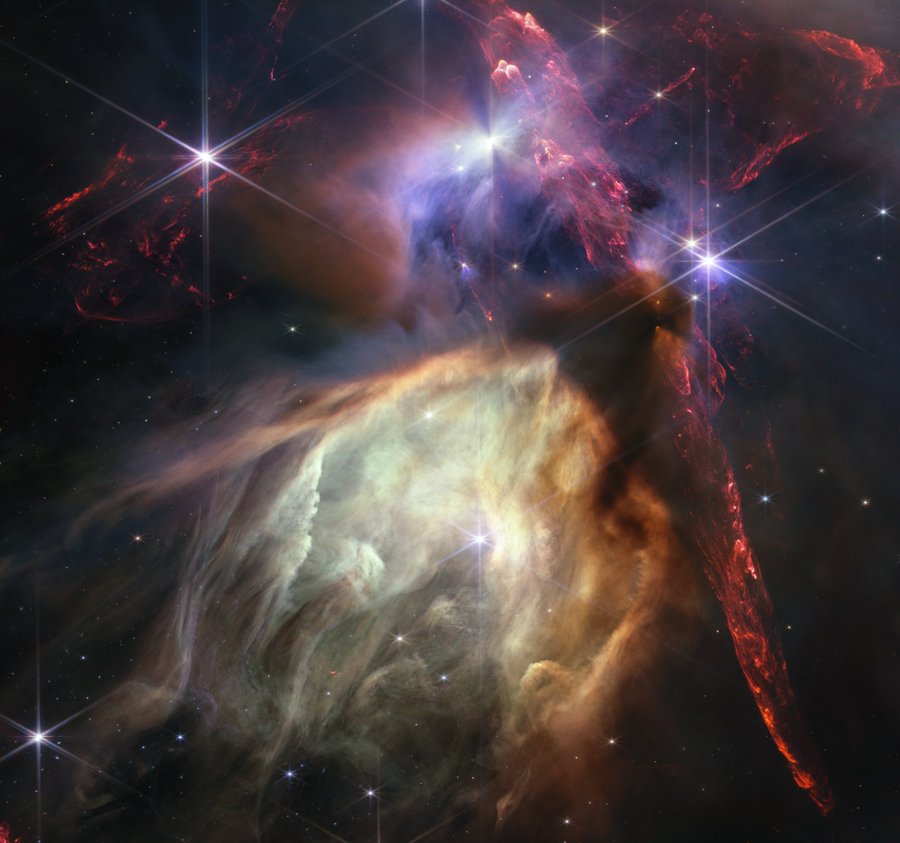 Rho Ophiuchi, the closest-star-forming region to Earth.
Rho Ophiuchi, the closest-star-forming region to Earth. -
19.
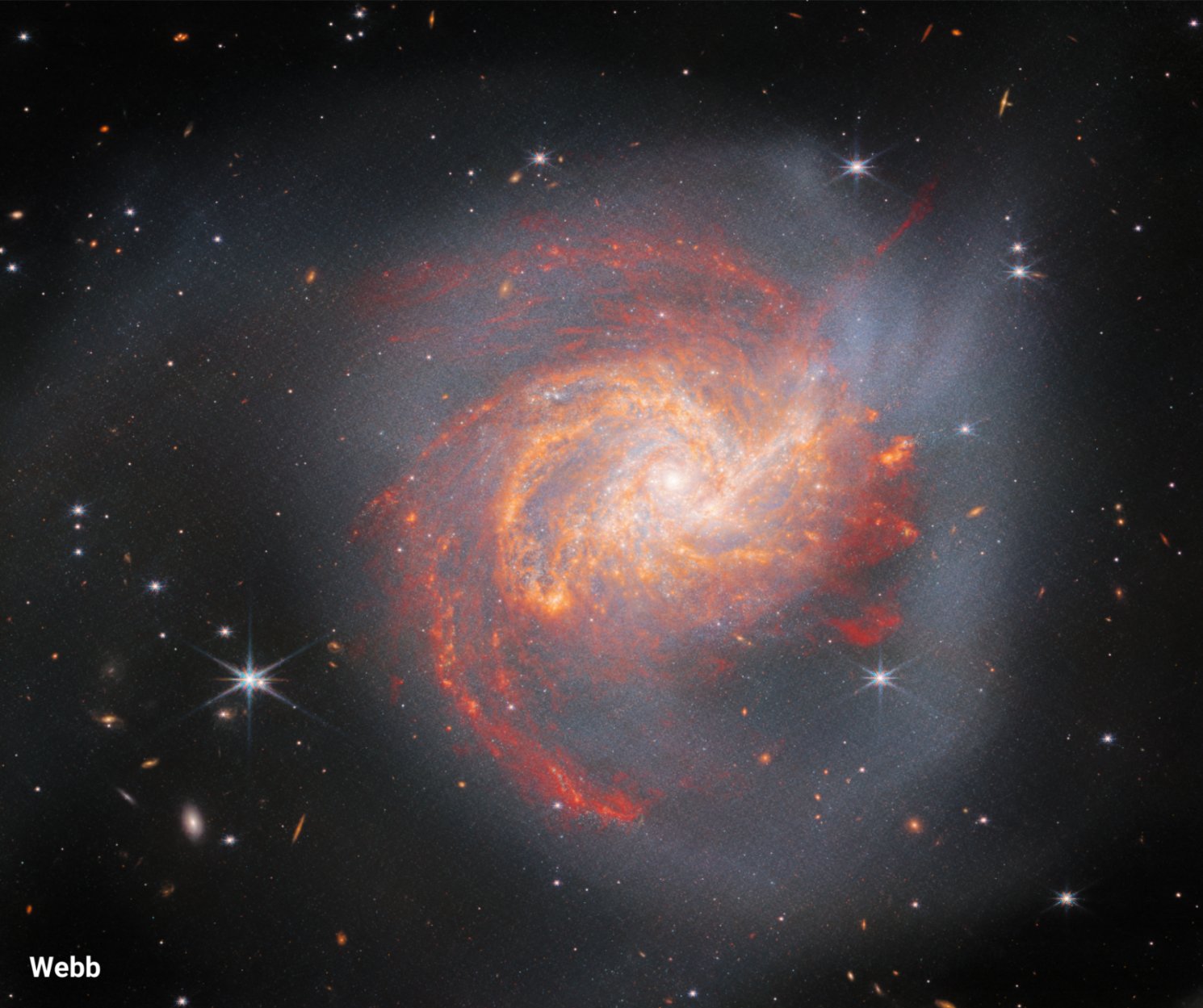 500 million years ago, 2 massive spiral galaxies collided. Their clouds of gas & dust mingled like smoke, sparking a burst of star formation. This event created galaxy NGC 3256. Its baby stars shine in infrared light, Webb’s specialty.
500 million years ago, 2 massive spiral galaxies collided. Their clouds of gas & dust mingled like smoke, sparking a burst of star formation. This event created galaxy NGC 3256. Its baby stars shine in infrared light, Webb’s specialty. -
20.
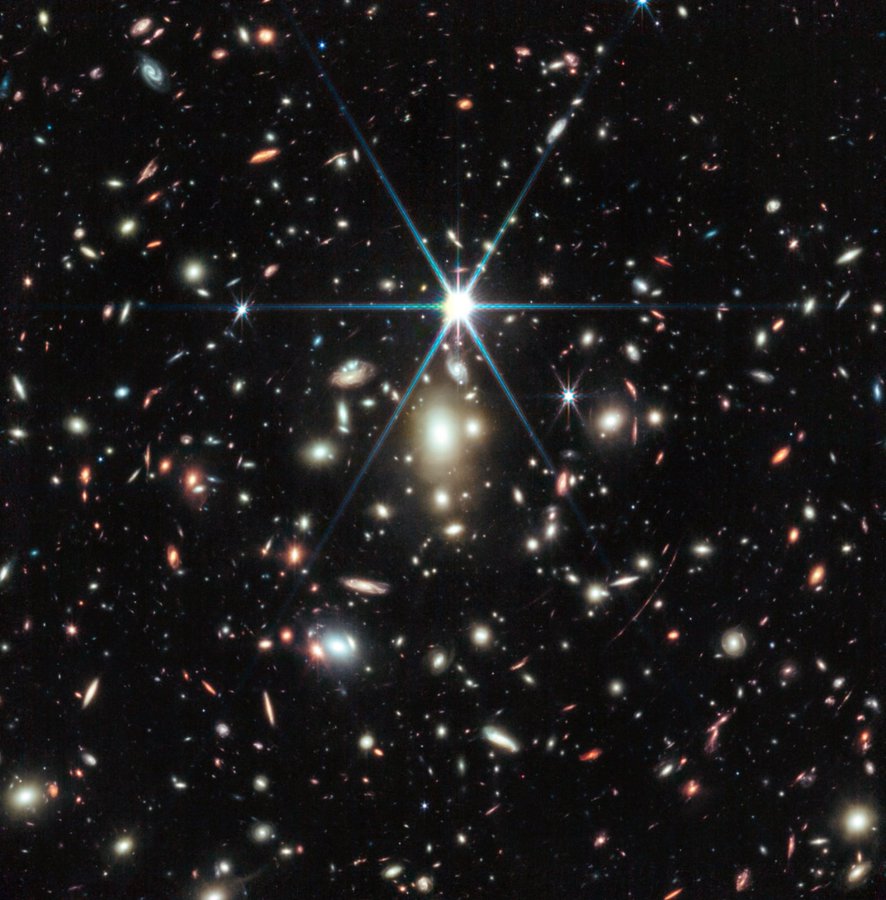 Earendel is only detectable thanks to a galaxy cluster between the star and us. The cluster’s gravity bends light, magnifying what's behind it—in the case of Earendel, by a factor of at least 4000! Based on its colors, astronomers think Earendel may have a cooler companion star.
Earendel is only detectable thanks to a galaxy cluster between the star and us. The cluster’s gravity bends light, magnifying what's behind it—in the case of Earendel, by a factor of at least 4000! Based on its colors, astronomers think Earendel may have a cooler companion star. -
21.
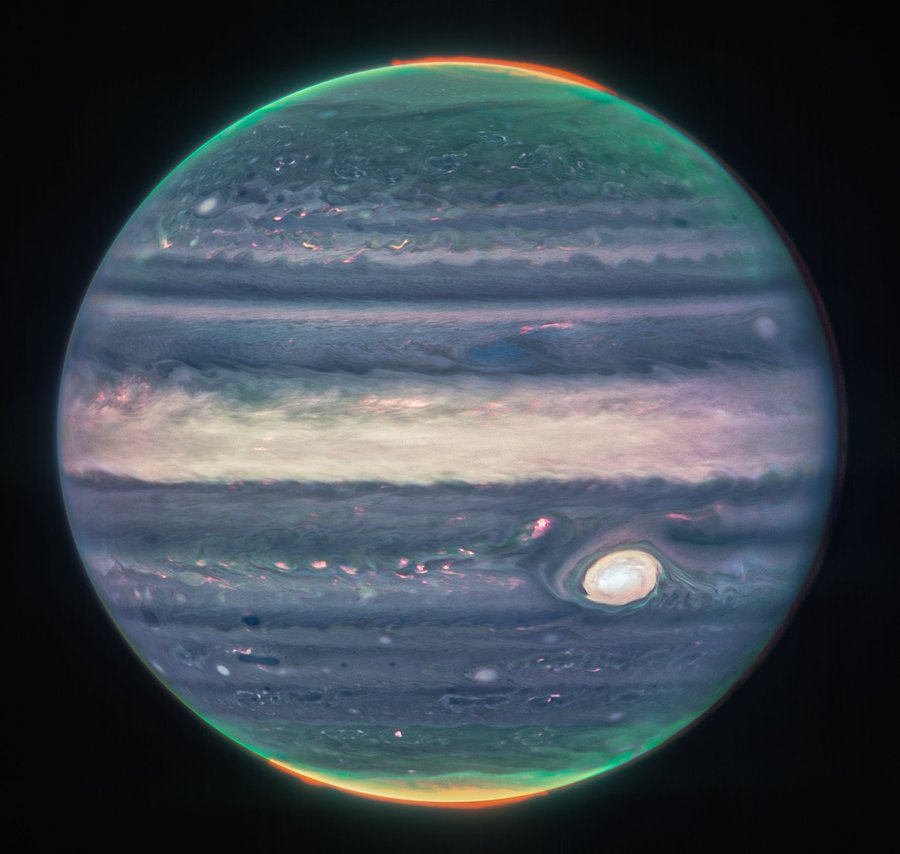
-
22.
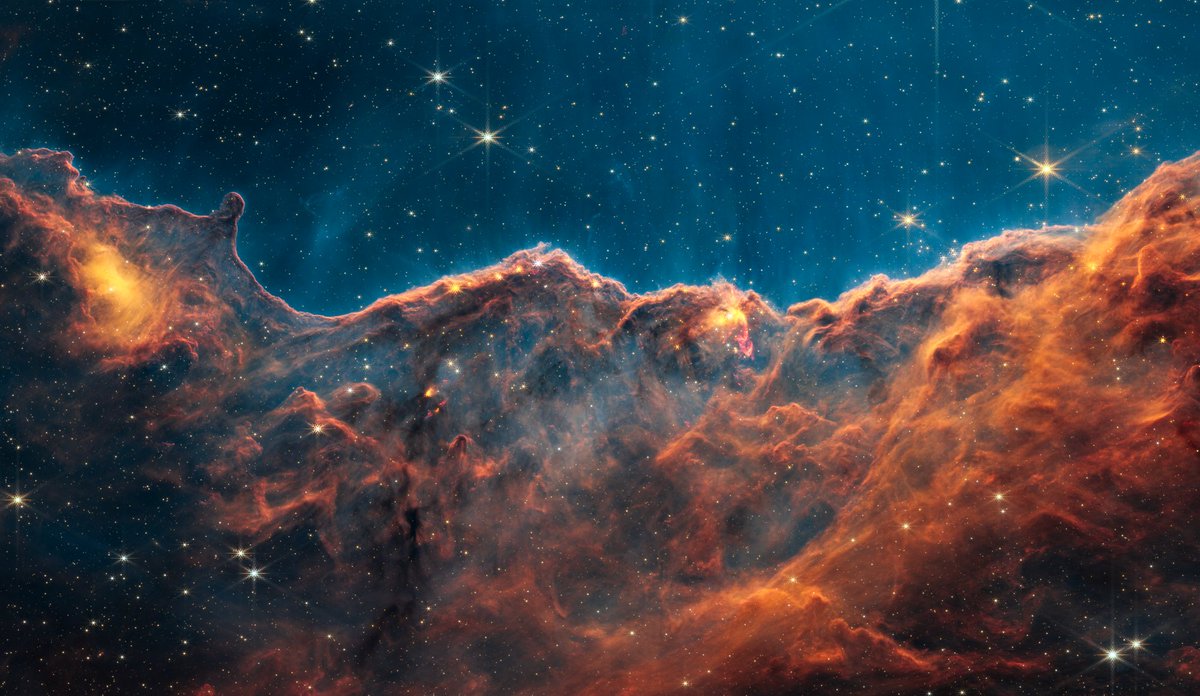
-
23.
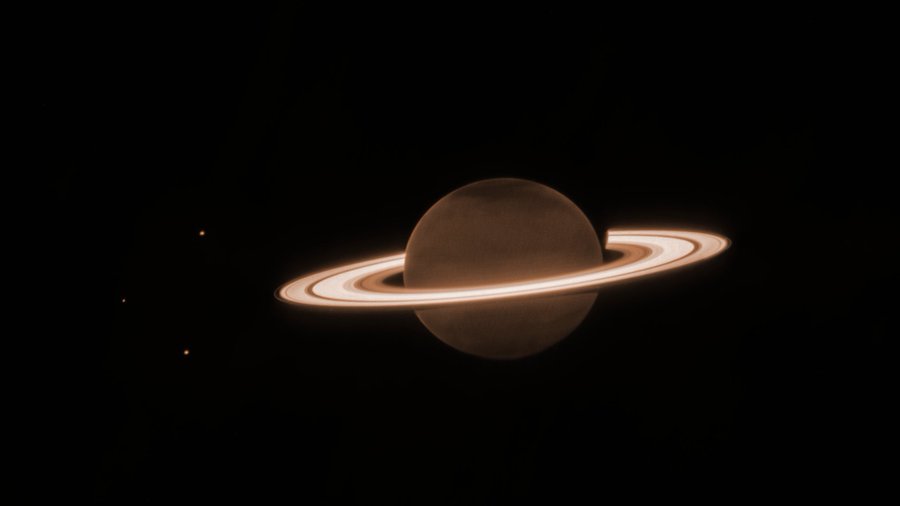
-
24.
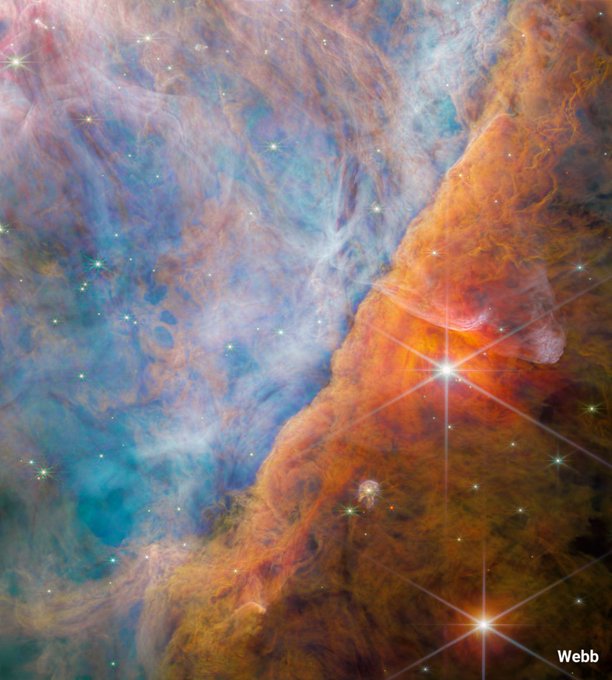
-
25.
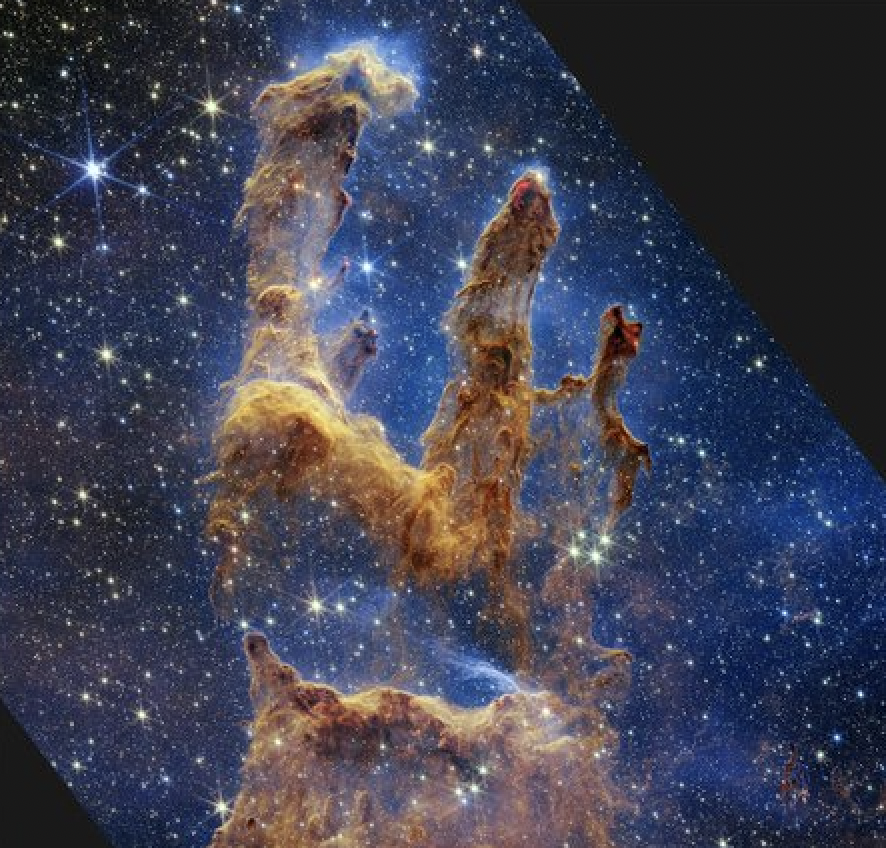
-
26.
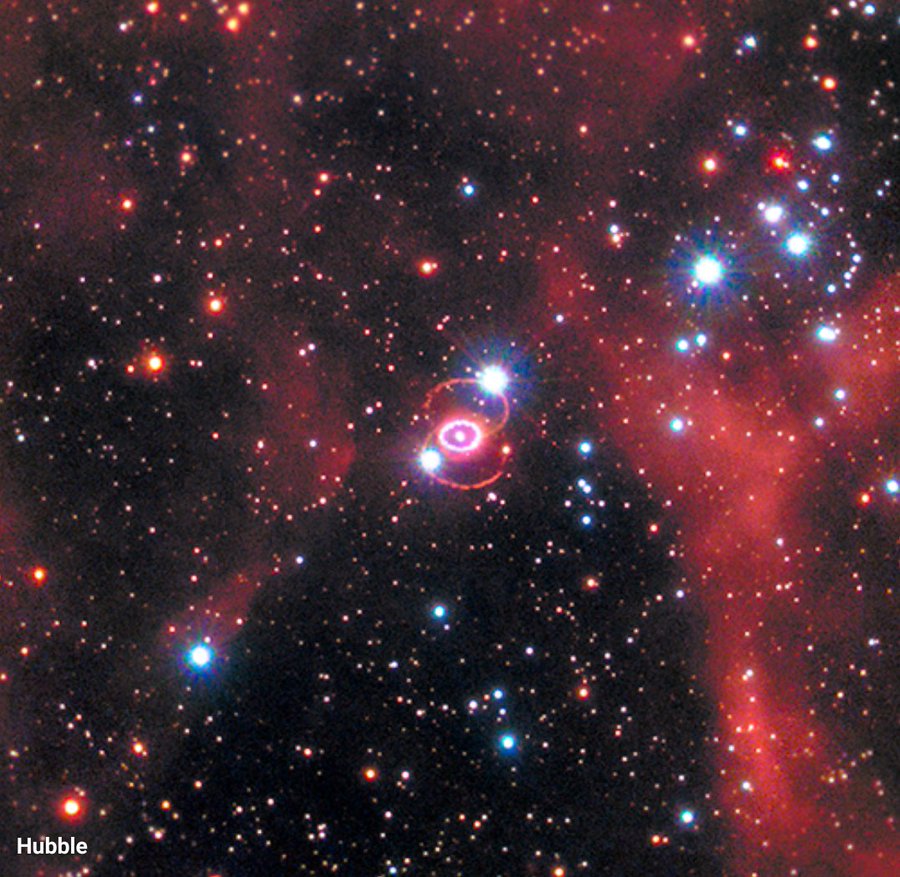 Since 1990, Hubble has observed Supernova 1987A. This wide-field view shows a bright ring around the central region of the exploded star that's made of material cast off by the star about 20,000 years before its death.
Since 1990, Hubble has observed Supernova 1987A. This wide-field view shows a bright ring around the central region of the exploded star that's made of material cast off by the star about 20,000 years before its death. -
27.
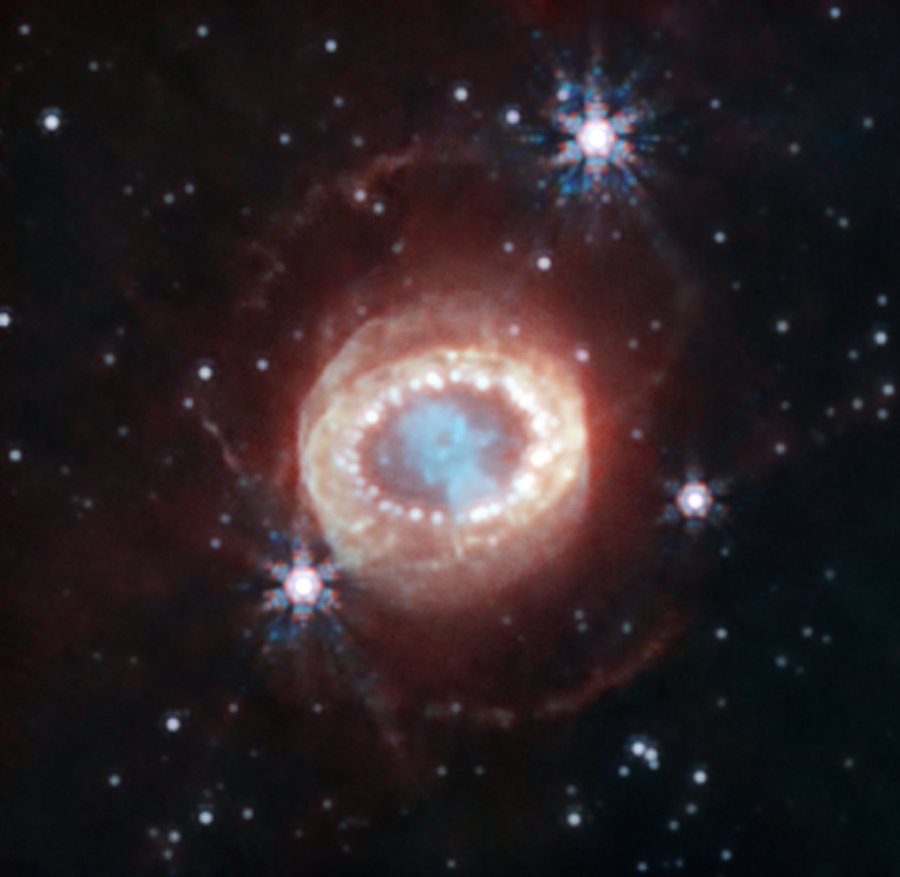 Floating like a cosmic jellyfish is the iconic supernova SN 1987A. Webb has given us the most clear & detailed look yet, revealing a new feature — small crescent-like structures thought to be part of the outer layers of gas shot out from the explosion.
Floating like a cosmic jellyfish is the iconic supernova SN 1987A. Webb has given us the most clear & detailed look yet, revealing a new feature — small crescent-like structures thought to be part of the outer layers of gas shot out from the explosion.
- REPLAY GALLERY
-
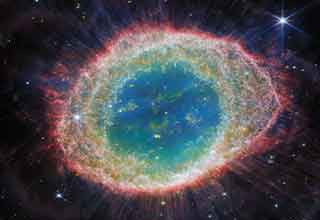
- 24 Amazing Photographs Taken By the James Webb Telescope
27/27
1/27





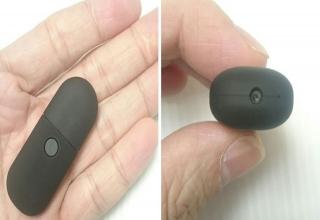



4 Comments